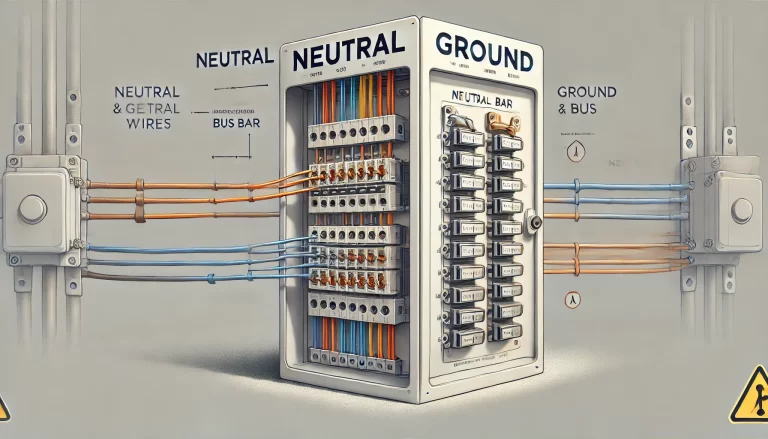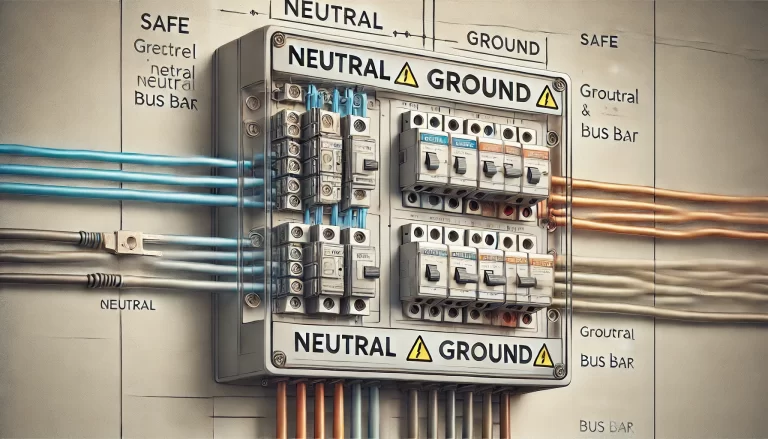In electrical systems, there is a clear distinction between the neutral wire (often called the N or zero line) and the ground wire (PE or protective earth). These two wires serve different purposes, and under no circumstances should they be shared or used interchangeably. Here’s a detailed explanation of why they must remain separate and what risks are associated with combining them.
1. Different Functions of Neutral and Ground Wires
Neutral Wire (N or Zero Line):
- The neutral wire is part of the electrical circuit that provides a return path for the current.
- It is connected to the ground at the main service panel in most electrical systems, which helps maintain a stable voltage across devices.
- In a three-phase system, the neutral wire balances the voltage between phases and ensures that any excess or unbalanced load is evenly distributed.
Ground Wire (PE or Protective Earth):
- The ground wire is primarily a safety feature, intended to protect people and equipment from electrical faults.
- It connects the metallic parts of electrical appliances and devices to the earth, so if there is a fault (like a short circuit or exposed wire), the current flows directly to the ground, reducing the risk of electric shock.
- The ground wire carries no current under normal operating conditions and only comes into play during electrical faults.

2. Safety Concerns with Combining Neutral and Ground Wires
Mixing neutral and ground wires can result in serious safety hazards:
Risk of Electric Shock:
- If the neutral and ground wires are shared, it can lead to appliances’ metallic parts becoming live (carrying current).
- When there’s a fault, instead of safely directing the current to the earth, the combined neutral-ground connection could energize exposed parts of the device, causing a potential electric shock hazard for anyone who touches it.
Increased Fault Risk in Electrical Devices:
- Electrical devices are designed to work with separate neutral and ground connections. A combined or shared connection could lead to malfunction or premature failure.
- When devices aren’t grounded properly, they lose their ability to shield against faults, leading to dangerous situations and potential damage to equipment.
3. Preventing Electrical Noise and Voltage Instability
Having separate neutral and ground wires also helps maintain a stable and efficient electrical system:
- Preventing Electrical Noise:
- The ground wire helps dissipate stray voltage and electrical noise that might affect sensitive equipment. If neutral and ground are combined, this noise may interfere with the operation of appliances, especially those that use sensitive electronics.
- Minimizing Voltage Instability:
- The ground wire keeps the voltage stable by providing a direct path to the earth. Combining it with the neutral could lead to voltage fluctuations, which can impact both the safety and functionality of the electrical system.

4. Compliance with Electrical Codes
Electrical codes and standards worldwide (such as the National Electrical Code in the United States) require that neutral and ground wires remain separate after the main service panel. This separation ensures that the safety measures designed into the system work as intended. Combining these wires violates code regulations and could result in inspection failures, fines, or the need for costly rewiring.
5. Proper Electrical System Setup
To ensure safety and efficiency:
- Always keep the neutral and ground wires separate in the distribution network of any building or system.
- The neutral is grounded only at the main service panel, and from there, separate wires are used for neutral and ground throughout the entire building.
- Any tampering or modification of these connections should only be done by a licensed electrician to avoid risks.

In summary, combining neutral and ground wires compromises the integrity of the electrical system and puts both people and property at risk. Proper wiring practices and adherence to safety codes are essential to maintain a safe, reliable, and effective electrical setup.
